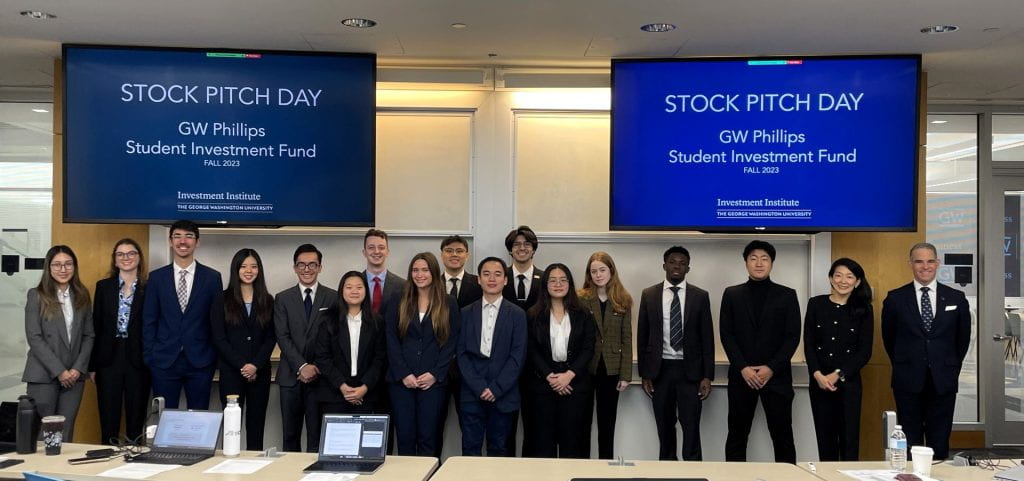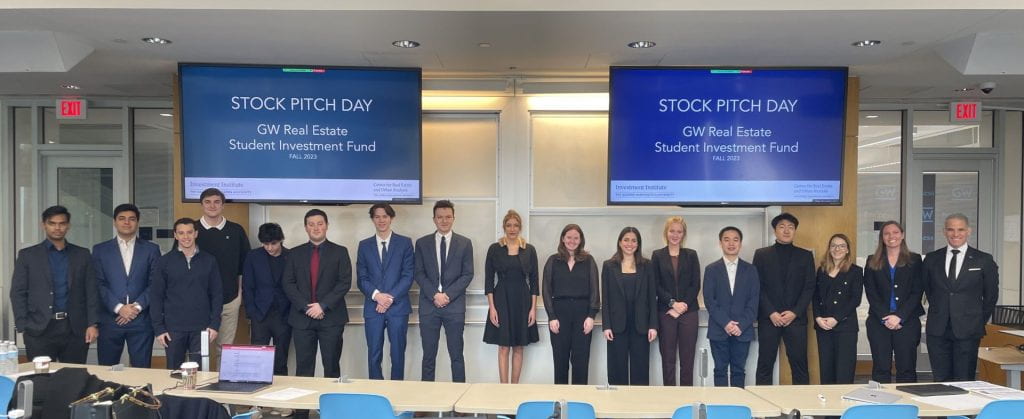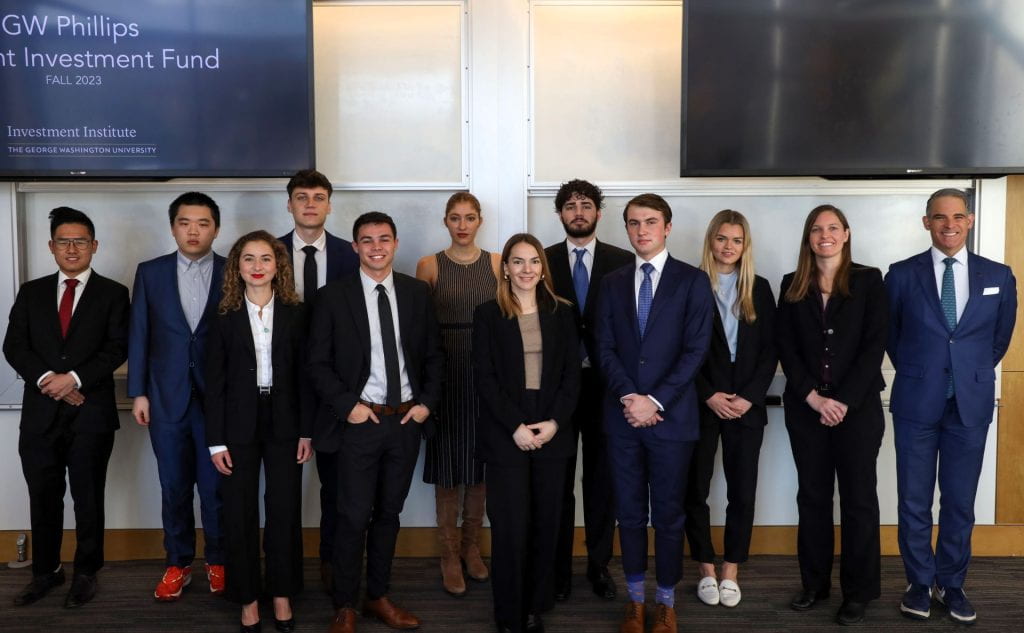It’s week three of the spring 2024 semester here at the GW Investment Institute (GWII), and I’m reaching out to update you on our latest endeavors, achievements, and upcoming events.
GWII offers two classes this semester, engaging 60 undergraduate students and over $2.9 million in Assets Under Management (AUM). These classes allow students to gain practical investment management experience and develop critical skills for their future careers.
I am grateful to Professor Song for teaching FINA 4101 – Applied Financial Securities Analysis for the third time. Undergraduate students in this class manage the GW Phillips Student Investment Fund, a diversified listed equity portfolio with over $2.9 million in AUM as of 1/29/2024.
Further, I’m grateful to Professor Bill Collier for teaching FINA 4104 – Foundations of Venture Capital again. Undergraduate students in this class build start-ups throughout the semester and receive feedback from venture investors and founders, then pitch their start-up ideas during the last week of classes.
Awards & Scholarships Available to GWII Students
We look forward to allocating the following awards this semester:
- Ramsey Scholars Awards – the top 10 students from academic 2024 will each receive $5,000, for a total of $50,000
- Leadership Awards – three students will receive $2,000 each for their contributions to the community at GW during the academic 2024, for a total of $6,000
- Charles Schwab Stock Pitch Awards – first place will receive $600, second place $400, and the third place will receive $250 for their stock pitch presentation, for a total of $1,250
Quarterly Report
Our students outperformed the benchmark during the 2023 calendar year; returns for GWII’s portfolios were 31.10% vs. the S&P 500’s 26.30%. Please see the most recent quarterly report as of December 31, 2023, with market commentary by GW senior Yaseen Shah.
Save the Date
- GW Investment Institute Annual Conference | Washington, D.C., March 22nd, 2024
- GWII Alumni Reception | New York City, TBD
- VC Pitch Day | Washington, D.C., April 26th, 2024
- Stock Pitch Day | Washington, D.C., April 27th, 2024
I’m thankful for all your support and look forward to the exciting developments and achievements in 2024 and beyond.
Best regards,
Rodney E. Lake
Director, GW Investment Institute

















